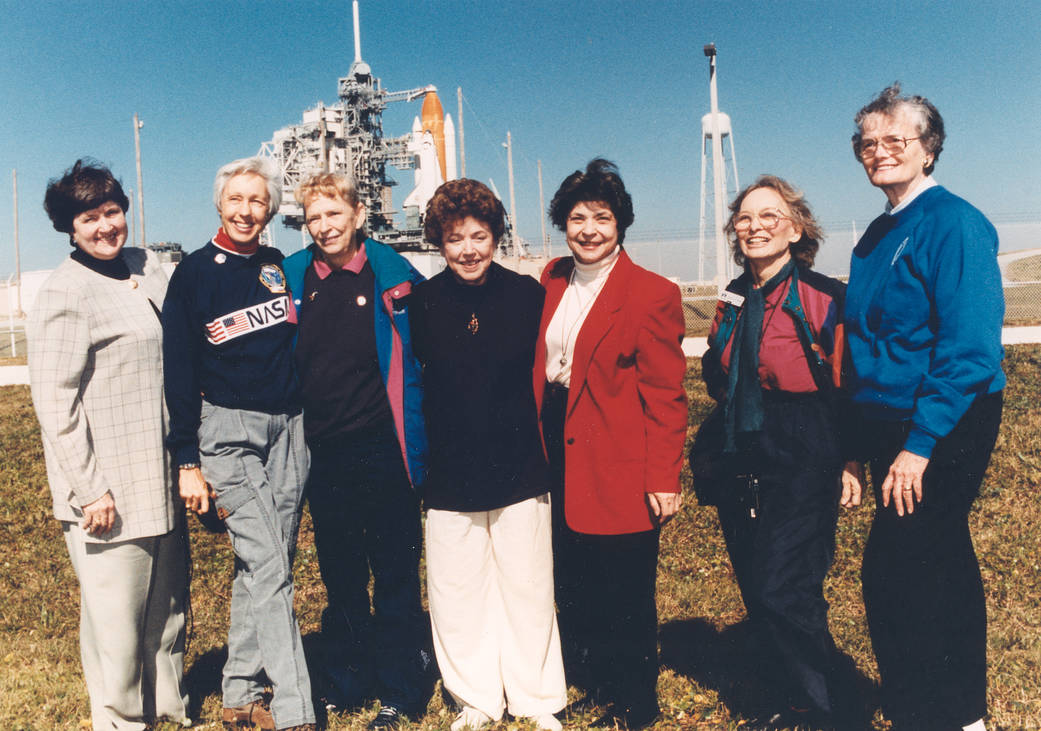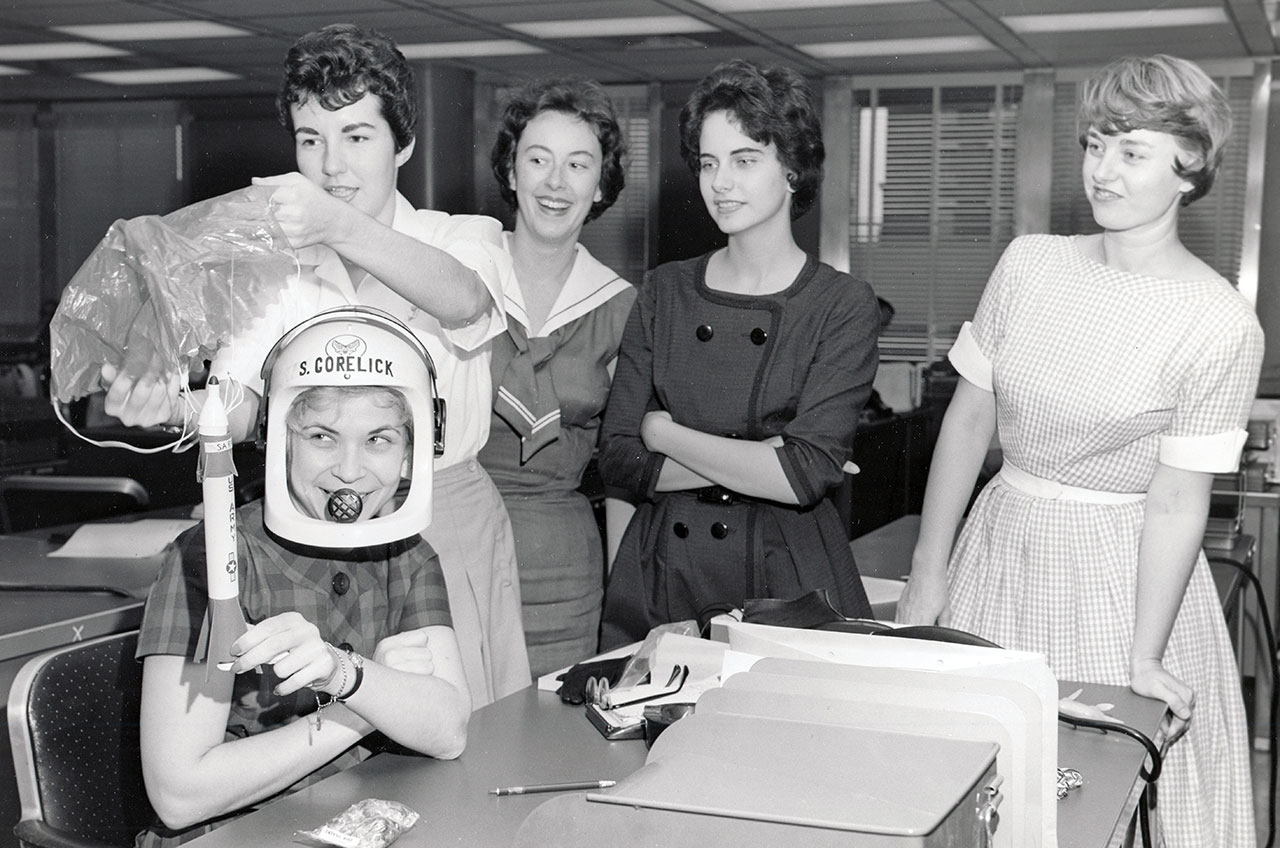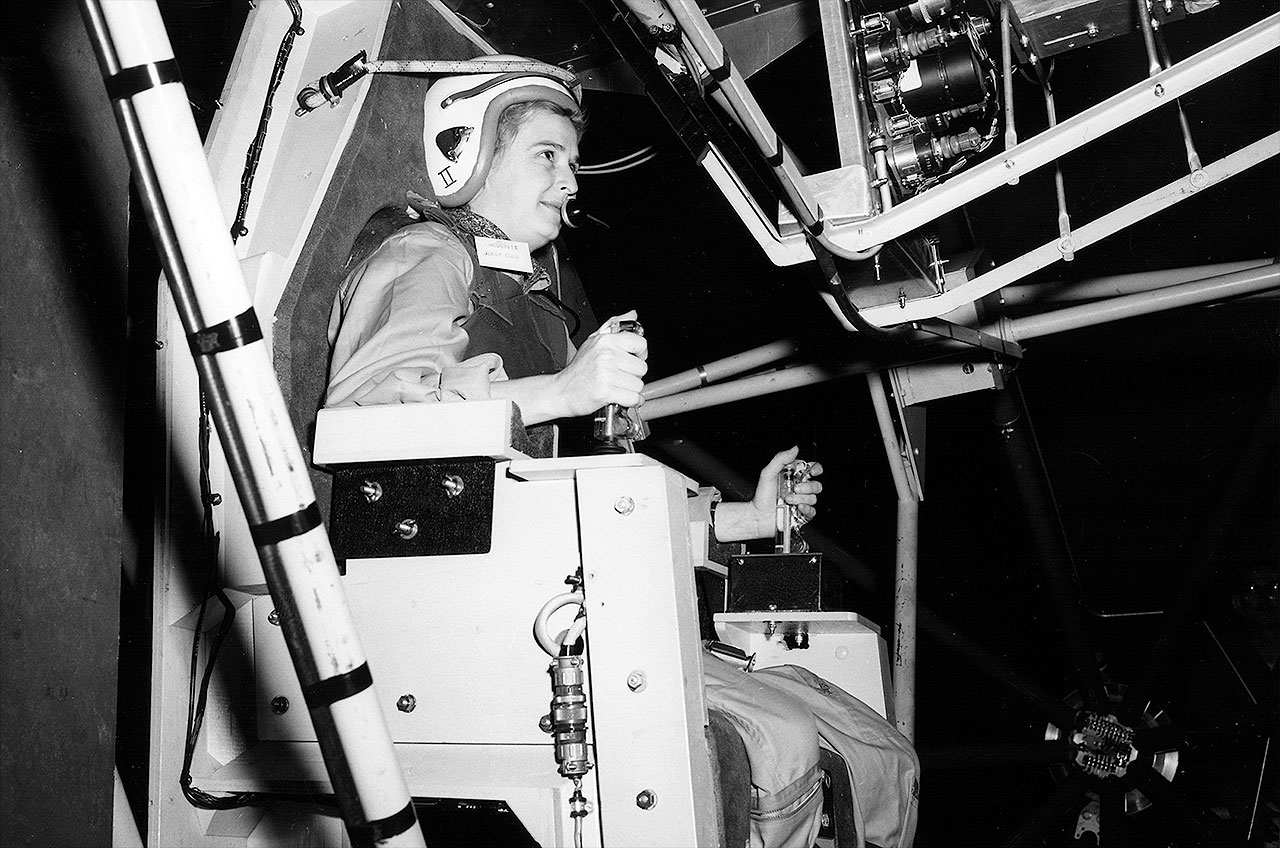The Mercury 13: The women who could have been NASA's first female astronauts
The First Lady Astronaut Trainees, or Mercury 13, were a group of women pilots qualified to fly in space but excluded because of their gender.

The lives of America's first astronauts — a group known as the Mercury 7 — have been etched into modern-day history. Chronicled in the now-classic 1983 movie "The Right Stuff," based on the 1979 book of the same name by Tom Wolfe, these military test pilots were also all men.
Lesser known is the story of the 13 women who could have qualified for NASA's astronaut program. Dubbed the Mercury 13, these fearless pilots had all the qualifications and experience to be able to compete with — and in some cases, outperform — their male counterparts. They were simply the wrong gender.
Related: How to become an astronaut
How the Mercury 13 began
With the Soviet Union's 1957 launch of Sputnik, the first artificial satellite, the space race between the USSR and the United States was officially underway. As U.S. officials worked to develop and bolster the nation's fledgling space program, they decided to begin hiring astronauts who would eventually fly in space.
But how do you hire for a position no one has ever held, and before the United States had even launched an uncrewed satellite into space? According to the Harvard Medicine magazine, officials turned to Dr. William Randolph "Randy" Lovelace, an aerospace physician and the head of NASA's committee on life science, for guidance. Lovelace was in charge of developing physical and mental tests to ensure that astronauts would be able to handle the rigors of operating in microgravity. The testing was incredibly thorough in order to confront all of the known and unknown challenges of space travel.
Related: What it's like to become a NASA astronaut: 10 surprising facts
Lovelace accepted NASA's many astronaut candidates with grace, and put them through his rigorous testing regimes in order to select the best men for the job. But unbeknownst to the agency, Lovelace also decided to conduct his own tests in secret, but on female candidates who also met NASA's astronaut qualifications. The women who qualified were known as the First Lady Astronaut Trainees, or FLATs, and later as the Mercury 13.
Breaking space news, the latest updates on rocket launches, skywatching events and more!
The female candidates were hand-picked by Lovelace, and visited his clinic individually or in pairs to complete testing. The women weren't tested as a group, as the Mercury 13 name implies; nor were they officially included in any NASA program. At the time, there was no government-sanctioned program to recruit, test or train women astronauts. Lovelace ran the entire program on his own.
What the Mercury 13 went through
Lovelace started his tests in 1960 with Geraldyn "Jerrie" Cobb, and eventually expanded the program to 25 more female pilots after Cobb's well-documented success. By the end of 1961, a total of 13 women, including Cobb, made the final cut: Myrtle Cagle, Janet Dietrich, Marion Dietrich, Wally Funk, Sarah Gorelick, Jane "Janey" Briggs Hart, Jean Hixson, Rhea Woltman, Gene Nora Stumbough, Irene Leverton, Jerri Sloan and Bernice Steadman.
There were three testing phases that the final selection of astronauts completed. A 2009 review published in the journal Advances in Physiology Training describes the first phase of testing as a grueling spate of physical tests and exams, including complete X-rays, a gynecological exam, electrocardiograms (EKGs) to measure heart rate, electroencephalograms (EEGs) to measure brain activity, other neurological tests, pulmonary exams, tests of oxygen capacity and more.
Related: Women in space: A gallery of firsts
The second phase of testing included psychological screenings, personality tests, additional neurological exams, isolation tests and more. The final phase consisted of flight simulations. Because this was not an official NASA program, these women weren't able to take these tests in a group or even complete phases back-to-back. Instead, the tests were administered over the spring and summer of 1961.
All of the women successfully completed the first phase, and three of the women also completed the second phase. Jerrie Cobb was the only woman to officially finish all three phases, and she scored in the top 2% of all candidates of any gender, outperforming some of the Mercury 7 astronauts. Unfortunately, the FLATs program was canceled in 1962 before many of the women even had the chance to attempt all of the tests.
Funding wasn't the problem, as the FLATs program was privately funded by Jacqueline "Jackie" Cochran, who was a pilot and pioneer in women's aviation. But the ability to actually test these women is ultimately what stopped the program. Lovelace only had the capacity to perform the physical and medical exams at his clinic. The third phase of testing, which involved space simulation, required the use of military facilities. But the government would not allow Lovelace to use military equipment for testing women when NASA had no intention of sending them to space, or even considering women as astronaut candidates at the time. As a result, the FLATs program was canceled.
Despite being denied their opportunity to fly in space, the FLATS are memorable because of their dedication and work toward a more equal future. "The women who took the astronaut medical tests were remarkable for their willingness to try something hard," said Amy Shira Teitel, author of "Fighting for Space: Two Pilots and Their Historic Battle for Female Spaceflight" (Grand Central Publishing, 2020). "Even though they weren't qualified to fly in space by NASA's standard of the day, their commitment to pursuing a dream is inspiring," Shira told Space.com in an email.
Related: Record-breaking women in spaceflight history
After Lovelace's program was canceled, Jerrie Cobb continued to work toward putting women in space. In 1961, before the program's cancellation, NASA Administrator James Webb named Cobb a consultant to the agency on the role of women in space, according to NASA. When she received notification that the FLATs program's final tests would not take place, she began campaigning Congress for a hearing on women in space. Her efforts came to fruition in July 1962.
Surprisingly, and for reasons that haven't been made public, it was Jackie Cochran who put the final nail in the coffin for the FLATs program during the 1962 Congressional hearings. She opposed reinstating the program, and instead voiced her support for sending men to the moon. Some have speculated that her motivations were political, The Verge reported. Cochran may have been hoping to end the program in the hopes of spearheading an even larger one — perhaps even one where she would take center stage and fly in space herself, Popular Science reported.
The legacy of the Mercury 13
While none of the Mercury 13 members ever made it into space, these women paved the way for other female astronauts who shattered the glass ceiling for women at NASA, such as Sally Ride, Eileen Collins, Mae Jemison, Peggy Whitson and more.
Related: Major milestone: 50 years of women in space
The FLATs' journey has been chronicled in books such as "Mercury 13: The True Story of Thirteen Women and the Dream of Space Flight" (Thorndike Press, 2003) by Martha Ackmann and the aforementioned "Fighting for Space: Two Pilots and Their Historic Battle for Female Spaceflight," a dueling biography of Jackie Cochran and Jerrie Cobb, written by Amy Shira Teitel. The 2017 Netflix documentary "Mercury 13" brought the stories of these women into the mainstream discussion of women in history, and Amazon ordered a television series about the FLATs in 2017.
Additional resources:
- Learn more about the women of the Mercury 13, from History.com.
- Read more about Lovelace's Women in Space Program, from NASA.
- Watch the trailer for Netflix's Mercury 13 documentary.


